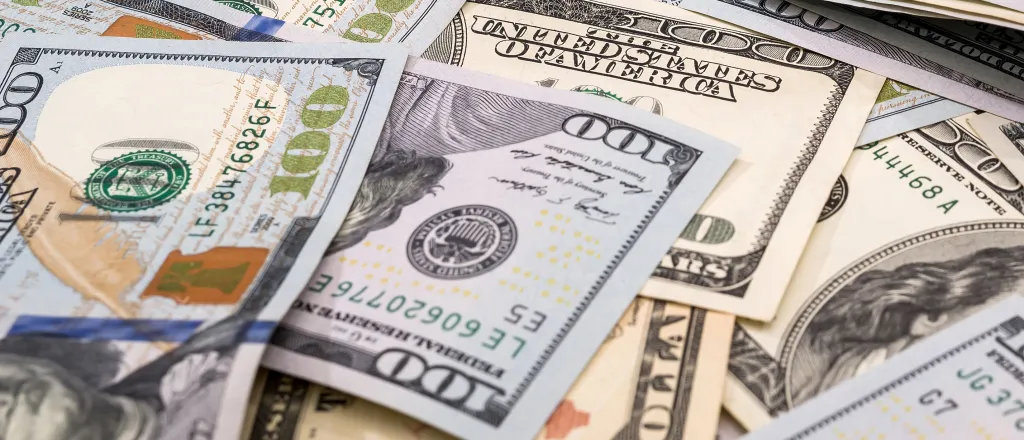
Stimulus bills could add nearly $6 trillion to national debt
(The Center Square) – In mid-April after the first two federal relief bills were passed in response to the coronavirus economic crisis, which put nearly 22 million people out of work within a month, U.S. Treasury Secretary Steven Mnuchin said the government could afford to go into more debt to offset economic losses.
As of May 1, the national debt was $24.9 trillion.
The national debt refers to direct liabilities of the United States government, the U.S. Treasury Department explains, including public debt, debt held by the public that excludes the portion of debt held by government accounts, and gross federal debt.
Mnuchin told reporters, “interest rates are incredibly low, so there’s very little cost of borrowing this money.”
But this rationale is false, Chris Edwards, an economist at the Cato Institute, told The Center Square. “Mnuchin seems to have forgotten about loan principal. Every dollar borrowed causes damage down the road from the resulting higher taxes extracted from the private sector,” he says. “Furthermore, interest rates may spike, which will increase federal borrowing costs as accumulated debt is rolled over.”
The spending and tax cuts allocated by the CARES Act, and the Families First relief bill, will increase debt by $1.76 trillion, and $192 billion, respectively, according to CBO projections. The small business relief act added $480 billion to the total.
In total, spending increases and tax cuts in coronavirus legislation may increase debt initially to roughly $2.4 trillion. Edwards estimates that the effect of recession will reduce federal revenues a further $2.2 trillion over the next few years. With higher spending and lower revenues, federal borrowing costs are expected to be approximately $1.2 trillion higher over the next decade.
The basic CBO estimates exclude these costs, Edwards notes. All told, these decisions will add an estimated $5.8 trillion to the national debt.
The deficit will soar to nearly $4 trillion in 2020, then narrow to roughly $1.5 trillion for the next few years, before it is expected to widen again, Edwards says.
Between 2019 and 2030, the federal government may add $20 trillion in new debt, according to Edwards’ projections. Under the pre-coronavirus CBO baseline, federal debt held by the public had been expected to rise from $16.8 trillion in 2019 to $31.3 trillion by 2030, or 79 percent of GDP to 98 percent. According to Edwards’ calculation, debt will rise to $37.2 trillion by 2030 or 116 percent of GDP.
The additional stimulus spending and coronavirus-caused recession may impose nearly $6 trillion of costs on future taxpayers, Edwards estimates.
Debt increases as federal revenue declines. During the Great Recession, revenues fell 18 percent between 2007 and 2009 and took five years to recover to the level it was before. If revenues fall by 18 percent in 2020 due to the recession, and then recover and regain the CBO baseline level by 2025, Edwards projects that federal revenue losses will be roughly $2.2 trillion.
“The current crisis shows how the government should have paid down the debt during the decade long economic boom and the added debt from the crisis would be easier to handle,” Edwards told The Center Square.
“Once the crisis is over and economy starts growing, policymakers should focus on restraint across the board and aim to balance the budget in say 5 or 10 years.”
Harvard economist Kenneth Rogoff, who co-wrote a history of financial collapses in 2009, and has warned about the risks of escalating national debt, agrees with Edwards on the government’s role of paying down the debt.
"We are in a war," Rogoff told CBS MoneyWatch in March when the first stimulus bill passed. "The whole point of not relying on debt excessively in normal times is precisely to be able to use debt massively and without hesitation in situations like this."
To understand the process, Rogoff explains that the U.S. Treasury Department isn’t actually printing an additional $2 trillion in dollar bills to pay for these programs. Instead, it borrows the money from investors by selling U.S. government bonds.
“The challenge comes when that $2 trillion Treasury bond sale siphons money away from other essential lending markets, including blue-chip corporate bonds — that makes it more expensive for all kinds of companies and local governments to borrow,” Rogoff adds.
According to CNN business analyst, Charles Riley, “Financial markets should easily absorb this new wave of debt, especially because central banks have committed to buying huge amounts of government bonds as part of their own stimulus efforts.”
Riley adds that, “economists aren't worried about the short-term effects of this massive splurge. The prospect of rising inflation caused by waves of stimulus, for example, isn't much of a concern because consumer demand is likely to remain subdued during the recession, even when lockdowns are eased or lifted.”
















